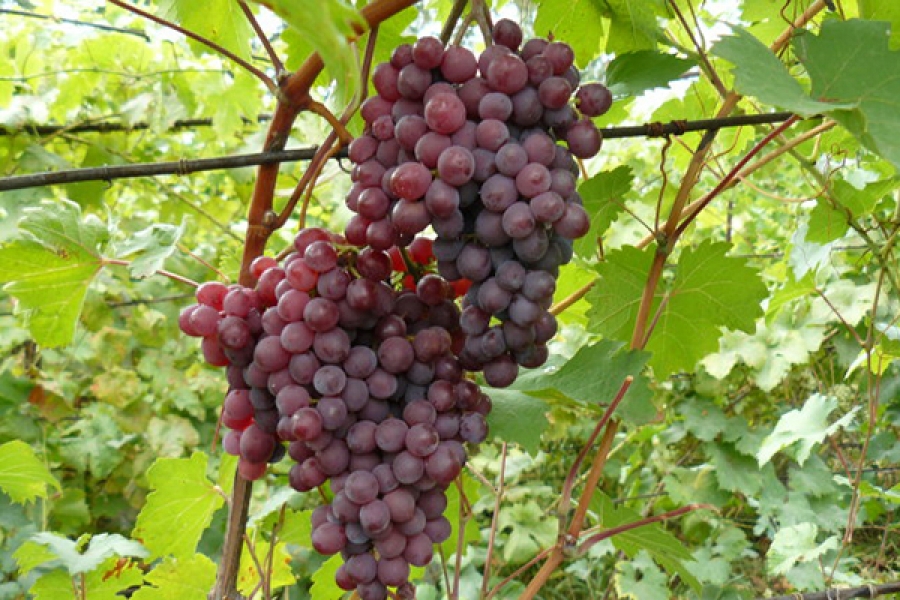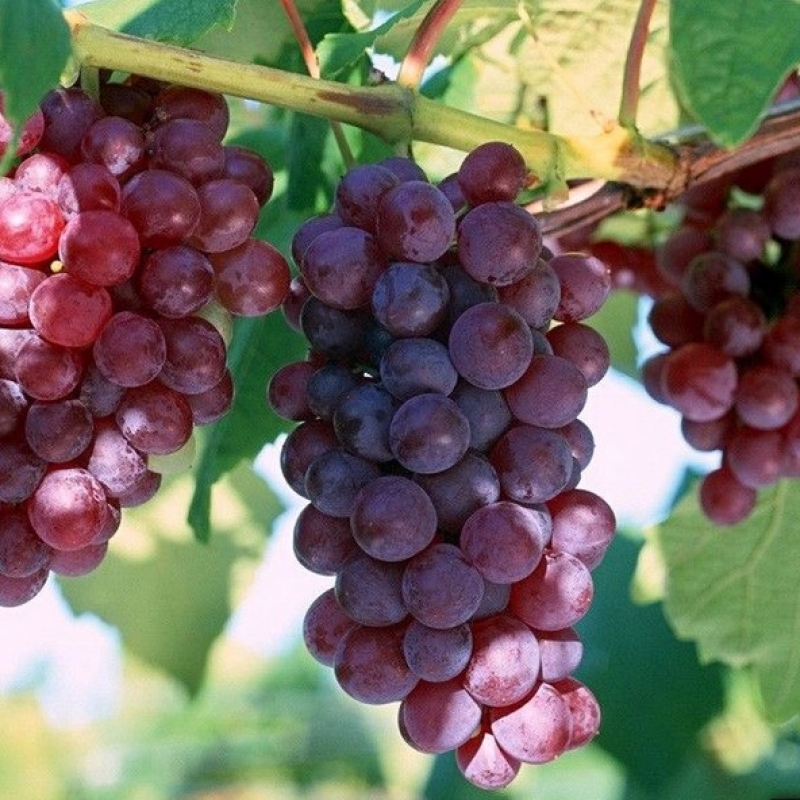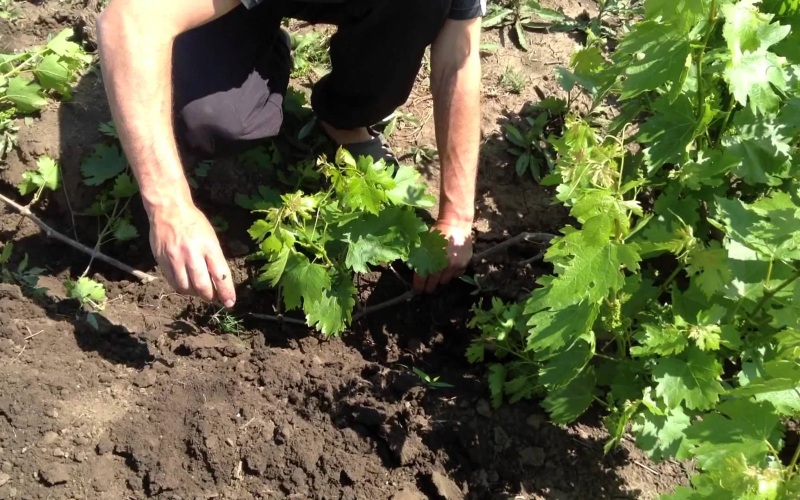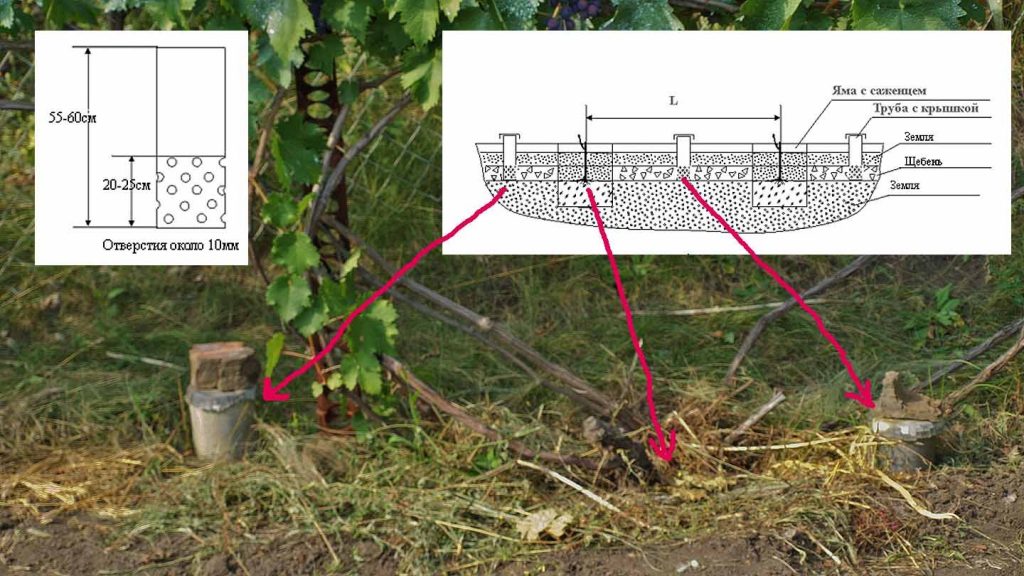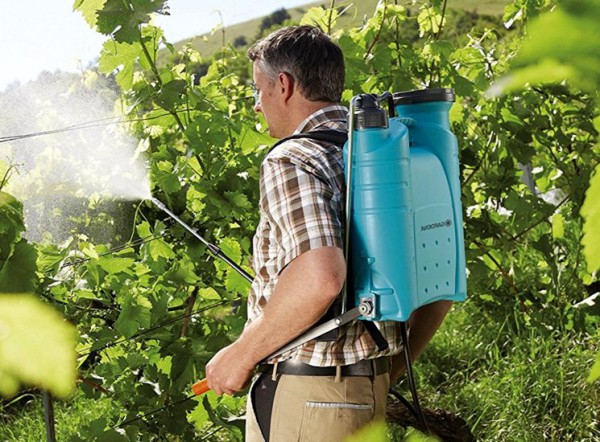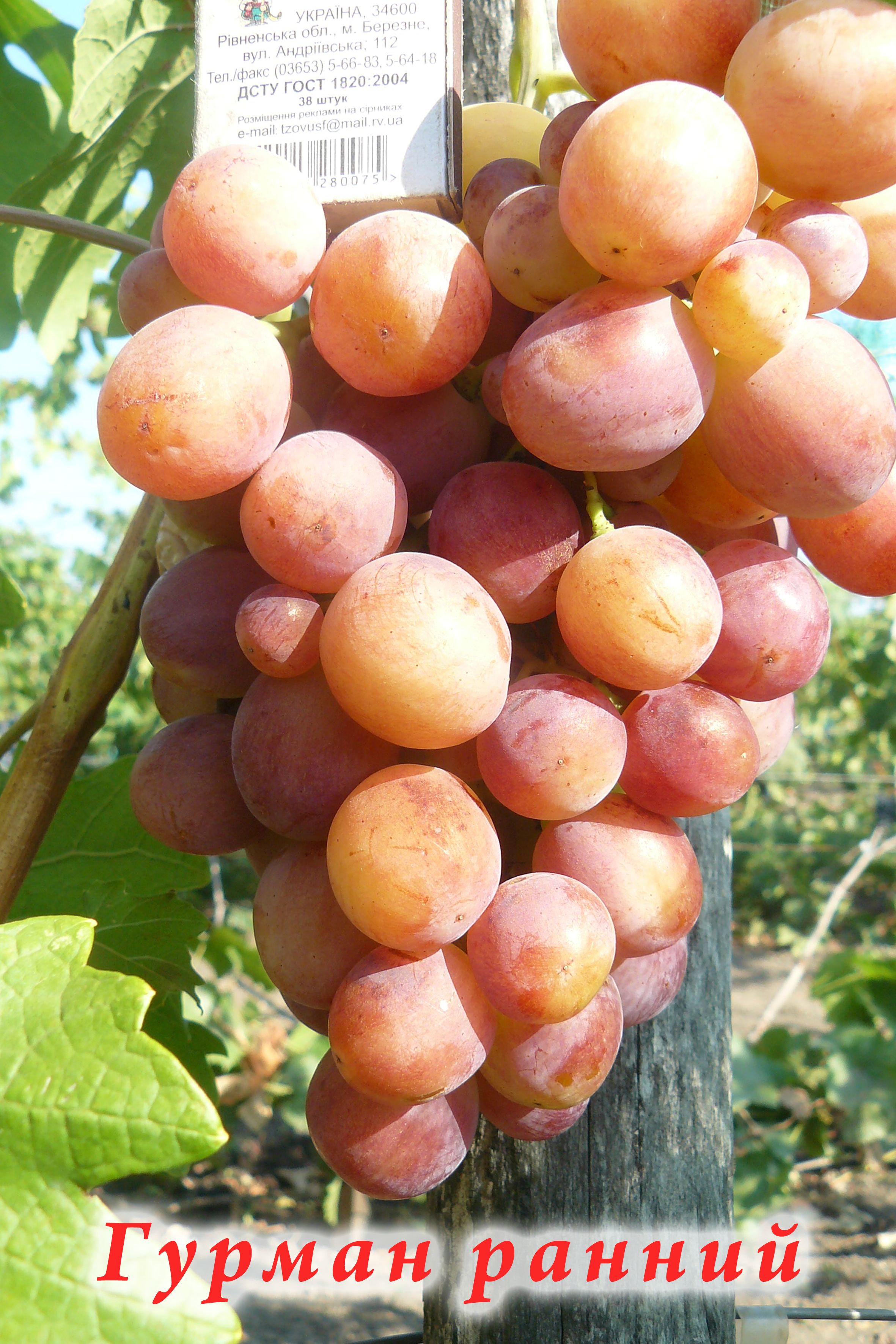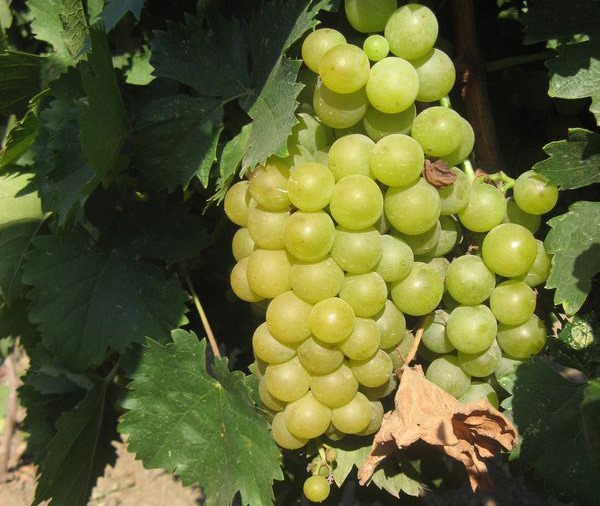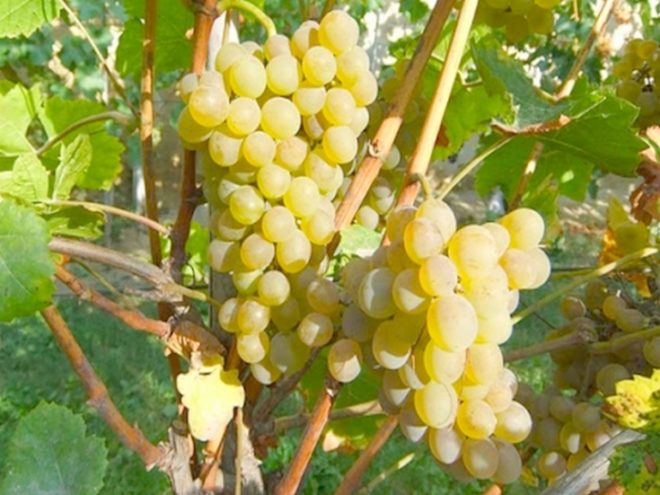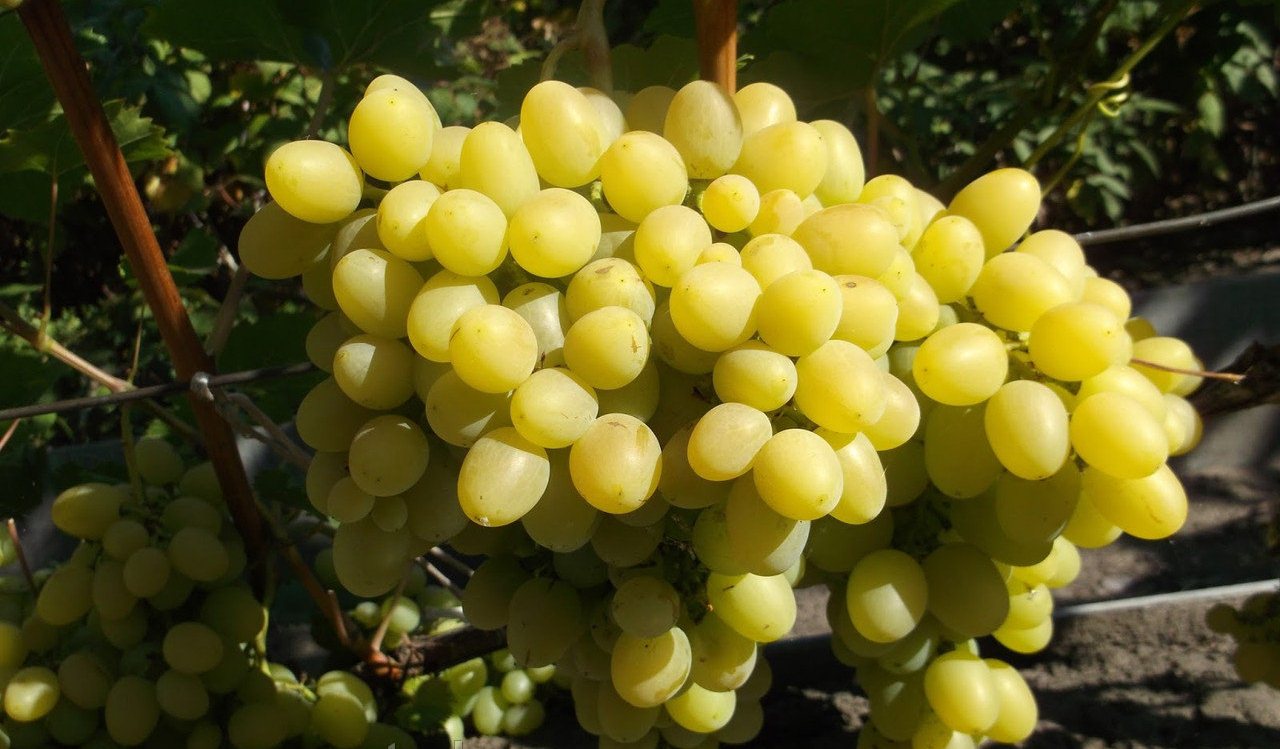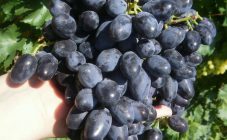The early Russian grapes, which are super popular among gardeners, were created by breeders of the Novocherkassk VNIIiV. This hybrid successfully combines the best qualities of the original varieties Michurinets and Shasla Severnaya. At an early ripening period, it easily adapts to a rather harsh climate, therefore it has long taken root in many regions of our not the hottest country.
Description of Russian early grapes
Russian grapes is a dessert table variety that has received another name for its excellent taste - candy grapes. The main advantage of the variety is the ability to harvest in the second half of July. Of course, this period applies to the southern regions, and in higher latitudes and in the Moscow region, ripening occurs earlier than many other varieties. If you add 110 - 115 days to the budding time, you get the time when the harvest is expected.
Despite the fact that in the first years of growth the bush adds little in size, later it grows up to 5 meters and forms long strong vines and a massive central stem. Leaves are medium in size, oval or heart-shaped, bright green. Flowers are male and female, that is, the variety is self-pollinated, therefore it does not need to be planted with a pollinator.
The bunches have a conical shape, the density is low, the length is about 15 cm, with intensive care it can reach 25 cm, the mass of the brush is 200 - 400 grams. The berries are dark pink or light purple in color with a waxy coating, oval or spherical, each berry weighs about 6 g. The taste of the grapes is sweet, with a slight sourness and caramel aftertaste. The peel is of sufficient density for the grapes to tolerate transportation, but when eaten is not tough, creates a pleasant crunch.
The positive characteristics of this variety include:
- Early ripeness;
- yield up to 25 kg per bush;
- excellent winter hardiness. Early Russian grapes easily tolerate frosts down to -24 degrees, in the south of Russia it does not need shelter;
- the ability to grow in places where there is a short daylight hours;
- perfect for propagation by cuttings;
- up to three inflorescences are formed on each shoot;
- ripe brushes can stay on the bush for a long time without losing their appearance and taste;
- since the berries do not ripen at the same time, it is not necessary to harvest the grapes all at once;
- tolerates transportation well;
- disease resistance is rated as medium.
The disadvantages include:
- the first three to four years after planting, the grapes bear little fruit;
- medium-sized berries and loose brushes;
- requires regular watering;
- berries crack if watered irregularly;
- can be damaged by wasps.
Agrotechnics
The rules for growing the variety are not much different from the standard, although they have some features:
- in regions that are not traditional for growing grapes, special attention should be paid to the choice of a place for planting so that the bush does not lack sunlight and warmth;
- due to the ability to grow when planting on a bush, at least five meters of area is required;
- it is advisable to plant this variety near a gazebo or arch;
- planting a vineyard is possible both in the spring and in the autumn.
When planting in spring, pits are dug 3-4 days before, and if planted in autumn, then two weeks before planting. A drainage layer is laid out at the bottom of the hole 0.5 m deep, then a nutrient soil prepared from a mixture of garden soil, humus and sand. The hole is watered, after the soil subsides, watering is repeated, adding 500 grams of ash to half a bucket of water.
When planting a grape seedling, you need to pay attention to its condition: the absence of mechanical damage, signs of disease and pest damage. Together with the bush, an irrigation pipe is placed in the hole, the seedling is added dropwise and watered.
Growing a hybrid is unthinkable without proper watering. Here it is necessary to distinguish between vegetative and moisture-charging species. The latter is produced in spring and autumn, and the autumn is more important, because it directly depends on how the grapes overwinter: in moist soil it will more easily endure frosts. In summer, two plentiful waterings are enough for the entire growing season: the first time - when the inflorescences have faded, and the second - when the fruits begin to ripen. Pour 15 to 20 liters of water under each bush. In especially dry years, more watering will be required.
Watering is not recommended with cold water, this can slow down budding and delay the ripening of the crop. Warm water, on the other hand, helps to awaken the bush and can bring fruiting closer.
It is recommended to feed this varietal variety with complex mineral fertilizers three times a season: in spring, during ripening and before sheltering for the winter. During the second feeding, fertilizers should contain phosphorus and potassium, but nitrogen is contraindicated, since it leads to the growth of green mass and the lag of berries in ripeness. Each top dressing is combined with watering.
In viticulture, the most important element of care is pruning, on the correctness and timeliness of which the yield, appearance and taste of the grapes depend.
Pruning rules:
- During the first two years after planting, only dried shoots are cut;
- before the lignification of the vines, the real formation of the bush is not produced;
- annual pruning is carried out only in those places where the vine has reached a thickness of 2.5 cm.
- to reduce the load and form larger clusters on one shoot, only one or two clusters are retained.
You should also pay attention to the diameter of the central trunk: the thicker it is, the stronger the skeleton and the higher the yield and quality of the fruit.
The next element of care that you should pay attention to is protection from diseases and harmful insects. The early Russian variety is quite resistant to grape diseases mildew, powdery mildew and gray rot, but phylloxera is a common enemy of this grape. To combat it, it is shown to add sand to the pits during planting. For prevention, grapes are sprayed with Fozalon, Aktelik, Fastak preparations, and spraying with herbal infusions is also used. If aphids are found on the leaves, they are cut off and burned. If the bushes are still infected, they will have to be uprooted and burned.
Enemy number 2 - wasps, which appear when the grapes are ripe and can destroy a significant part of it. They are scared off with smoke bombs, traps are set, nests are found and burned.
Recommendations for the use of grapes
Such a delicious variety as Russian Early is best suited for fresh consumption, because it appears when the other varieties are not yet ripe.Those with whom it grows in considerable quantities can be recommended to make juice, it will turn out to be very tasty, because the sugar content of this variety reaches 21%, and the acidity is less than 7 g / l.
Muscat grape aroma will add a unique flavor to the wine.
The gardeners who grow the Russian Early variety confirm that with proper care it really produces early yields consistently. But even with insufficient care, this variety will give birth regularly, which is especially appreciated by beginners.
This variety is suitable both for beginners to gain experience in growing grapes, and for experienced winegrowers who want to get early harvests even in regions that are not very suitable for viticulture.
